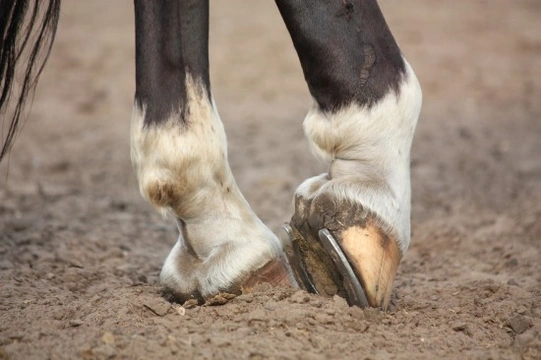
Equine Hoof Shape & Lameness - Valuable Research Carried Out
Recent studies have shown that the shape of a horse's hoof could well be associated with chronic lameness commonly seen in many horses and ponies. This is breaking news for horse owners because it means that by studying a horses hooves, it may well be possible to see whether they will be predisposed to certain chronic conditions whilst other shaped hooves may well indicate that a horse will remain sound.
For a long time, people have known that an abnormal shaped hoof was usually the cause of lameness commonly seen in many equines. However, the research which was carried by the Clinical Orthopaedics at the Animal Health Trust in Newmarket shows that the shape of a hoof may well indicate whether a horse would be predisposed to suffer from chronic lameness.
Photographic Evidence Used in the Research
The research analysed hundreds of photographs of horse's hooves, a percentage of which were of sound horses and a percentage of photographs of the hooves were of lame horses. The analysis took into account many causes for the lameness some of which included the following injuries and conditions:
- Injuries to collateral ligaments of the coffin joint
- Injuries to the deep digital flexor tendon
- Osteoarthritis
- Pain in the hoof where a diagnosis and cause was not conclusive
Careful studies of the hooves showed marked key findings proving the shape of the hoof did in fact have a bearing on whether a horse would be more likely to go lame. Researchers studied and measured the characteristics of the hooves, taking note of the shape of the coronary band as well as the dorsal hoof wall. The amount of growth rings and horn tubules also had a bearing on their findings as did the angle of the hoof wall, a horse's heel and the coronary band together with hoof wall lengths, all of which contributed to the fact a horse may be more predisposed to chronic lameness.
The Key Findings of the Research
Surprisingly, the key findings showed that a high percentage of horses (22%) that suffered lameness on just the one foot was due to the fact the hoof was taller and more upright than the foot the horse did not fall lame on. When it came to horses with a long toe and a collapsed low heel, 10% of them were lame on that foot too. Other key findings of the study showed the following:
Horses boasted different shaped coronary bands on a lame foot as compared to the non-lame foot with the lame hoof having a coronary band that was a lot more concave in shape than the non-lame foot
The research showed that a lack of alignment of horn tubules together with the orientation of growth rings were seen to be connected to the fact that a horse may suffer from chronic lameness on that one foot
What it All Means
This valuable research goes a long way in confirming that the shape of a horse's hoof does have a real bearing on whether they are predisposed to suffering from chronic lameness. The results will certainly help vets and blacksmiths understand why some equines appear to go lame for not reason and where a diagnosis of the problem often proves very difficult and hard to treat.
How The Results Could Affect an Appraisal of a Horse or Pony
The other positive to come out of the research is that vets may be able to use this information in the future when they are required to vet a horse for a potential buyer. In short, the key findings of the studies carried out in Newmarket could be included as part of a vetting whether it's a five-stage vetting with blood sample checks for drugs or a two-stage vetting, although the latter is a more limited examination of a horse or pony which often does not show any potential problems a horse might potentially suffer from at a later stage.
The Importance of Pre-purchase Examinations
Whenever a person is thinking about buying a valuable horse, it is always very wise to have what vets call a full five-stage vetting"" examination carried out on the horse prior to making a final decision on whether to buy or not. The research carried out in Newmarket could be a valuable addition to a pre-purchase examination. The key findings may well prove to be a valuable indicator as to whether a horse or pony would suffer from impending lameness a little further down the line.
Conclusion
Buying a horse is an huge undertaking not only financially but care-wise too. If you know whether a horse you are hoping to buy may well be more predisposed to chronic lameness by a vet simply examining their hooves prior to the purchase, it could save you a heap of money and heartache a little later on should your horse suddenly go lame for not apparent reason at all. The research will also help vets understand and therefore help them treat chronic lameness in horses that much better too.
""



